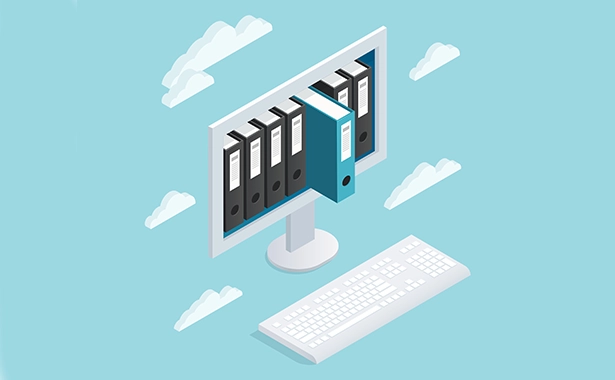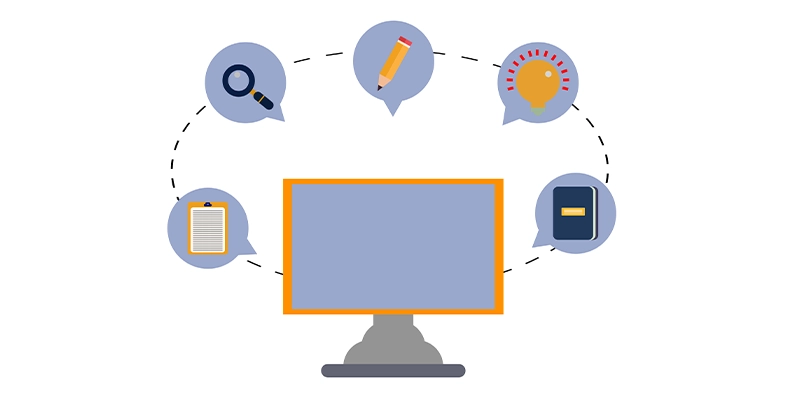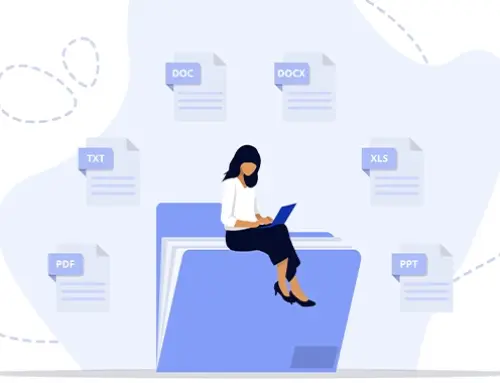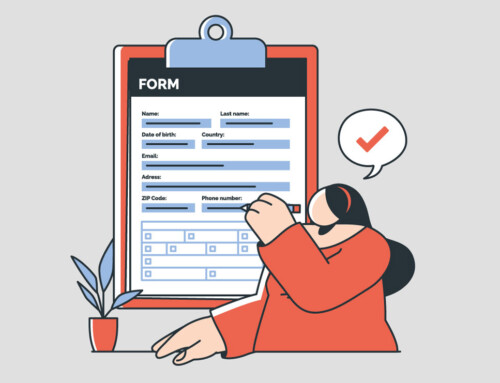Contents
Legal software plays a crucial role in transforming law firms by streamlining operations, enhancing efficiency, and improving client service. Its main functions and roles include:
Roles and Functions of Legal Software:
- Case Management: Provides a centralized database to store and track client data, case notes, billing, appointments, and communications. This replaces inefficient paper-based systems, enabling quick access and better organization of case information18.
- Client Relationship Management (CRM): Manages the client intake process from lead generation to conversion, automating communications, scheduling, billing, and follow-ups to improve client experience and reduce administrative workload.
- Automation: Automates routine tasks such as document generation, email follow-ups, billing, and appointment scheduling, freeing legal professionals to focus on substantive legal work23.
- Document Management: Facilitates secure creation, storage, retrieval, and automation of legal documents, reducing errors and saving time.
- Billing and Accounting: Tracks billing, payments, and financial management to keep firm finances organized and transparent.
- Communication Tools: Integrates secure messaging, video calls, and e-signatures to enhance client-lawyer interactions and reduce delays.
- Data Analysis and Reporting: Offers dashboards and analytics to visualize firm performance and case metrics, aiding strategic decision-making.
- Access and Security: Supports multi-user access with granular permissions and cloud or network-based access for remote work, ensuring data security and availability.
Legal software integrates multiple functions—case and client management, automation, document handling, billing, and communication—into unified platforms that help law firms operate smarter, faster, and more client-focused, software like RunSensible has a built in all in one dashboard that will ease your access to all your essential tools
Defining Legal Software: The Foundation of Modern Practice
Legal software, also known as legal operations technology, encompasses a diverse range of technologies. These tools are specifically designed to enhance legal services and workflows. While some are built exclusively for legal professionals, others are general technologies adapted for broader industry use. The scope of legal software extends to a strategic, holistic approach to firm management. This broader perspective views technology as an enabler of systemic improvement rather than just a collection of disparate applications. This shift is particularly important for small-to-mid-size firms aiming for a competitive edge.
The evolution of legal operations technology reflects a significant shift in legal practice. Historically, law firms often relied on manual processes or generic business software. The increasing complexity of legal workloads, stringent regulatory compliance requirements, and evolving client expectations for efficiency have driven the move towards specialized legal software. Modern legal software transcends basic automation. It offers integrated platforms that centralize diverse firm operations. This development means that firms are strategically optimizing their entire operational framework.
A key development in this evolution is the integration of artificial intelligence (AI). AI-powered legal software is transforming how attorneys work. It automates time-consuming tasks such as legal research, contract review, and drafting legal briefs, reducing hours of work to mere minutes.AI enables attorneys to gather profound insights from vast datasets, allowing them to be more efficient and strategic. The ability to leverage AI for deeper, faster insights allows firms to offer greater value to their clients. This can differentiate their services and potentially justify premium fees, moving beyond just labor savings to a strategic advantage in service delivery.
Core Roles and Functions of Legal Software
Legal software provides a multifaceted approach to managing a law firm. It covers a spectrum of functions, each designed to streamline operations and enhance practice outcomes. The true value of modern legal software lies in the interconnectedness of these functions. When integrated, they create a synergistic effect, where the combined impact surpasses the sum of individual tool capabilities. This integration allows firms to avoid data silos, minimize manual data entry across systems, and gain a comprehensive view of their practice. This directly improves efficiency and supports strategic decision-making.
A. Streamlining Case and Matter Management
Legal case management software serves as a central digital platform. It efficiently manages cases, clients, and documents. This software centralizes all case details, notes, deadlines, and related documents in a single, secure location.
Key functions include robust task tracking, precise deadline management, and automated workflows. It provides real-time access to all case data. Features such as automated task reminders, like those found in Access Legal Case Management ensure critical deadlines are not missed. This capability significantly improves organization, task management, and collaboration within the firm. It ensures no crucial detail is overlooked. By reducing administrative burdens, case management software allows fee earners to focus on billable work, directly contributing to firm profitability.
B. Optimizing Document Management and Automation
Document management software is essential for organizing, storing, and retrieving legal files. This includes contracts, pleadings, and client records. Document automation further enhances this by handling routine document drafting efficiently, utilizing templates and AI.
Core functions encompass version control, centralized storage, powerful search capabilities, and precise permission controls. Automated document creation is a significant benefit. AI-powered tools can read legal text, identify patterns, and generate consistent drafts, ensuring uniformity across the firm. These capabilities simplify document creation, retrieval, and sharing, which reduces administrative overhead and maintains data integrity. The result is a reduction in redundancy and a notable increase in overall productivity.
C. Enhancing Financial Management and Billing
Legal billing and accounting software specifically addresses the unique financial aspects of law firms. This includes managing trust accounts and providing detailed time tracking.
Its key functions involve automating time entry, generating invoices, managing payment processing, tracking expenses, and properly handling trust accounting. The software offers features like bulk payment from trust accounts and supports three-way trust reconciliations, crucial for IOLTA compliance. These tools optimize revenue generation, improve cash flow, and enhance financial transparency by accurately capturing billable hours and expenses. They also reduce under billing and significantly lighten administrative workloads.
D. Facilitating Client Relationship Management and Communication
Client Relationship Management (CRM) software organizes, tracks, and manages all client interactions and communications. Complementary communication tools facilitate secure internal and external interactions.
Key functions include secure client portals, secure messaging, and efficient document sharing. The software also assists with client intake management, lead tracking, and automated reminders for follow-ups. These features enhance transparency, build trust, and increase client satisfaction and retention. They streamline the client onboarding process and ensure consistent client engagement throughout the legal matter.
E. Ensuring Ethical Compliance and Risk Mitigation
Specialized features within legal software are critical for helping firms adhere to ethical rules and regulatory requirements. This area is vital for safeguarding a firm’s reputation and financial stability.
Conflict Checking: This functionality scans matters, contacts, and related parties for potential conflicts of interest before they escalate into issues. AI can automate these checks, significantly speeding up a traditionally manual and error-prone process.
Trust Accounting: This manages client funds in separate IOLTA accounts, ensuring proper segregation from operating accounts. This prevents commingling or misuse of funds. The software supports essential three-way reconciliation, a cornerstone of ethical financial management.
Audit Trails: Legal software offers comprehensive audit trail capabilities. These provide immutable records of all actions taken within the system, from document creation to billing transactions. Such trails offer clear evidence for audits and investigations, proving compliance.
Secure Document Management: Features like version control and centralized storage maintain data integrity, which is crucial for compliance with legal and ethical standards regarding document handling and retention policies.
Data Security: Robust cybersecurity measures, including encryption, access controls, and regular security audits, are fundamental. These protect sensitive client data and ensure compliance with privacy laws.
These functions collectively allow firms to proactively detect ethical violations, strengthen operational integrity, and ensure regulatory compliance. This significantly reduces the risk of costly data breaches and reputational damage.
F. Powering Legal Research and Analytics
Legal research platforms offer powerful search capabilities for statutes, case law, and legal commentary. Integrated analytics tools provide deeper insights from firm data, moving beyond simple information retrieval.
Key functions include advanced AI techniques for gathering insights from large datasets, brief analysis, smart code searching, and identifying relevant authorities quickly. Predictive legal analytics and cross-jurisdictional analysis are also available, offering a more strategic view of legal outcomes. These capabilities drastically reduce research time and enable more efficient and strategic legal work. They help lawyers craft well-informed strategies swiftly. Furthermore, they support data-driven decision-making for assessing case profitability and staff productivity.
G. Supporting E-Discovery and Litigation Management
E-discovery tools simplify the complex process of collecting, reviewing, and producing digital evidence during litigation. Litigation management features further streamline courtroom processes and preparations.
Key functions include automating data processing and filtering, using machine learning for classifying document relevance, and providing compliance controls with comprehensive audit trails. Integration with case management systems is a common and beneficial feature. These tools reduce the time and cost associated with manual document review, while simultaneously increasing accuracy. They also ensure adherence to strict data-handling protocols and court-imposed deadlines.
Legal Software role in Efficiency, Compliance, and Revenue
Legal software is a strategic investment that directly impacts a law firm’s core performance metrics. The evidence demonstrates a clear and quantifiable link between legal software adoption and tangible gains in efficiency, compliance, and revenue.
A. Boosting Operational Efficiency and Productivity
Legal software significantly boosts operational efficiency by automating administrative tasks, streamlining workflows, and centralizing data. This automation frees up valuable time for legal professionals. For instance, firms utilizing workflow automation tools, such as online intake forms and e-signatures, have reported up to 20% higher revenue and 15% faster client conversion rates. This demonstrates a direct correlation between process optimization and financial performance.
Furthermore, lawyers leveraging Legal Practice Management (LPM) systems dedicate a greater proportion of their time to billable work. In 2023, lawyers at small firms spent 61% of their time on billable tasks, an increase from 56% in the previous year. Concurrently, the time spent on administrative tasks decreased from 11% to 9%. This shift allows for a more productive allocation of resources. AI-driven automation further reduces administrative burdens and minimizes human error, particularly in time-consuming tasks like drafting correspondence and preparing invoices. The ability to automate these routine processes allows firms to achieve significant productivity gains, directly enhancing their capacity for client service and revenue generation.
B. Upholding Regulatory and Ethical Compliance
Legal software is instrumental in upholding regulatory and ethical compliance, transforming what is often viewed as a cost center into a revenue protection mechanism and a competitive advantage. The software aids compliance by providing secure storage, version control, and comprehensive audit trails for documents. These features are crucial for maintaining data integrity and adhering to document retention policies.
Built-in compliance features within Document Management Systems help firms meet critical data privacy and security regulations. Conflict checking features proactively detect potential conflicts of interest, preventing ethical violations before they occur. Integrated trust accounting ensures client funds are managed ethically and compliantly, with functionalities like three-way reconciliation. Secure, encrypted communication channels and robust cybersecurity protocols protect sensitive client data and ensure compliance with privacy laws.
By preventing ethical breaches and data security incidents, legal software safeguards a firm’s reputation and avoids costly litigation or fines. A firm known for its robust compliance and data security practices can attract more clients, as legal consumers increasingly expect seamless experiences, transparency, and efficiency. This transforms compliance from a mere obligation into a strategic differentiator, reinforcing client trust and protecting the firm’s revenue streams.
C. Maximizing Revenue and Profitability
Legal Practice Management Software (LPMS) directly maximizes revenue and profitability by streamlining financial operations. It automates invoicing, time tracking, and expense management, optimizing revenue capture. Accurate time and expense tracking facilitates precise client billing, budget management, and profitability analysis, effectively reducing underbilling.
Enhanced client satisfaction and retention, fostered through robust CRM functionalities, contribute to sustained and increased revenue. Firms that utilize e-signatures, online search advertisements, online schedulers, and online client intake forms have reported a 20% increase in revenue. These figures move beyond anecdotal benefits to concrete, measurable return on investment. For small-to-mid-size firms, which often operate on tighter margins and are highly sensitive to revenue, these statistics provide a compelling business case for technology investment.
Despite an average 6.5% increase in law firm billing rates in 2024, approximately 14% of billable hours remain unbilled, and 10% of billed fees go uncollected. Legal software directly addresses these “revenue leaks” by improving realization and collections through automated processes and better financial oversight. This demonstrates how technology can close profitability gaps and ensure firms capture the full value of their work.
Common Barriers to Legal Tech Implementation
One primary concern for firms is the cost of technology. Solo practitioners, for example, often spend less than $3,000 annually on legal software. This contrasts sharply with larger firms, which routinely exceed $20,000 in annual software expenditure. This financial constraint often stems from a deeper issue: a perceived lack of clear return on investment (ROI) and a strategic budgeting approach that views technology as an expense rather than a strategic investment and undermines the legal tech for better ROI. For firms with limited budgets, a clear, measurable return is essential to justify the outlay.
Resistance to change is another common barrier within law firms. This resistance often arises from concerns about the ability of staff to learn and effectively use new tools. The comfort of established routines can outweigh the perceived benefits of innovation.
Data security concerns are paramount, given the sensitive nature of legal work. While many legal tech solutions offer robust encryption and security audits, solo and small firms generally have fewer security features and policies compared to their larger counterparts. This disparity creates a significant competitive vulnerability and ethical risk. In an era of increasing cyberattacks, this vulnerability can lead to data breaches, loss of client trust, regulatory penalties, and substantial reputational damage, all of which directly impact compliance and revenue. This highlights that security should be a core selection criterion for legal software, as it underpins the firm’s ability to operate ethically and competitively.
A significant knowledge gap or steep tech learning curve can also impede adoption. Staff may lack the proficiency needed to leverage new tools effectively, necessitating thorough training. Furthermore, integration issues can arise when new tools do not seamlessly connect with a firm’s existing software ecosystem. Finally, firms often face difficulty in vetting vendors and accurately assessing the usefulness and return on investment of new technology.
Strategies for Successful Adoption and Integration
Overcoming these barriers requires a multi-pronged strategic approach. Firms should promote a tech-friendly culture, clearly communicating that technology is a valued and critical tool for success. Involving stakeholders in the decision-making process for new technology increases their acceptance and support.
Adequate training and support are indispensable. This includes offering in-person sessions, online tutorials, or one-on-one coaching, coupled with accessible technical support. This addresses the knowledge gap and alleviates concerns about the learning curve.
Firms must address data security proactively. This involves selecting secure solutions with strong encryption and regular audits. Implementing robust password policies and providing regular cybersecurity training for staff are also vital protective steps.
To tackle cost concerns strategically, firms should opt for scalable solutions that allow for gradual expansion. Utilizing free trials, consulting peers for real-world reviews, and focusing only on necessary features can prevent unnecessary expenditure. Crucially, firms must showcase the measurable return on investment through improved efficiency and client satisfaction. This frames technology as a strategic investment rather than a mere expense.
Finally, choosing a compatible technology partner is paramount. Firms should thoroughly vet vendors, considering their track record, customer reviews, and support mechanisms. Evaluating how well a new solution integrates with existing systems and ensuring its compliance with specific field regulations are also critical steps. Facilitating smooth transitions involves identifying needs, setting clear goals, developing a detailed transition plan (including data migration and staff training), communicating changes effectively, conducting pilot tests, implementing in stages, and continuously monitoring and adjusting performance.
The Future of Legal Software: Trends and Outlook
The legal technology market is undergoing rapid transformation, driven by advancements in AI and the widespread adoption of cloud-based solutions. These trends are reshaping how law firms operate and interact with clients.
The Surge of AI and Cloud-Based Solutions
The legal technology market is experiencing robust growth. It is projected to reach $47.61 billion by 2029, demonstrating a compound annual growth rate (CAGR) of 9.4%. This expansion is largely fueled by the increasing integration of AI and cloud-based services.
AI usage among legal professionals has surged dramatically, jumping from 19% to 79% in just one year (2023-2024). A remarkable 93% of mid-sized firms now utilize AI in some capacity, with over half (51%) adopting it widely or universally. Popular AI tools include legal research platforms (66% usage among mid-sized firms), generic non-legal AI tools (65%), and document drafting or automation tools (60%).
Cloud-based practice management has become mainstream, with 90% of firms planning to maintain or increase their technology budgets. Solo and small firms lead in cloud adoption, with 71% utilizing cloud-based LPM software. However, a notable disparity exists: mid-sized firms lag significantly, with only 38% using cloud-based LPM software. This difference suggests varying drivers or barriers for technology integration across firm sizes. While smaller firms may embrace cloud LPM for agility and lower IT overhead, mid-sized firms might be more entrenched in legacy systems or face different internal IT concerns that slow their transition. This presents a unique challenge and opportunity for legal software providers to tailor their strategies, emphasizing integration and migration support for mid-sized firms.
The shift to cloud technology, accelerated by recent global events, is now permanent. Cloud-based systems offer real-time access to information, enhanced security, and easier collaboration among legal teams.
Evolving Client Expectations and Billing Models
Client expectations continue to evolve, with a strong demand for seamless experiences, transparency, and efficiency in legal services. This is profoundly impacting traditional billing models.
Flat fees are gaining significant traction. For example, 64% of mid-sized firms now offer flat-fee billing. Furthermore, 71% of legal consumers express a preference for flat fees over traditional hourly billing. This preference is driven by the desire for predictable pricing and clear value.
As AI compresses the time required for many legal tasks, the traditional hourly billing model becomes less attractive and, in some cases, less viable. Research suggests that up to 74% of tasks traditionally billed hourly could be automated with AI. This profound shift compels firms to pivot to flat-fee, subscription, and value-based billing models. Firms that fail to adapt their billing models will likely face competitive pressure and client dissatisfaction, as AI-driven efficiency gains demand a re-evaluation of how legal services are priced and delivered.
Remote Work and Hybrid Practice Models
Remote work and virtual collaboration are no longer niche concepts but major trends driving the growth of the legal technology market. Most small and mid-sized firms have now embraced hybrid work models, where attorneys split their time between home and office. This shift has shown stable or improved productivity and higher staff satisfaction.
To support these flexible arrangements, firms are adapting their physical footprints, often downsizing physical offices or implementing “hoteling” desks and shared workstations. Concurrently, investment in high-quality video conferencing equipment and cyber security solutions is increasing to ensure seamless and secure remote operations. This adaptation allows firms to access wider talent pools and improve attorney and staff retention.
Final Thoughts
Legal software plays a central role in helping small-to-mid-size law firms operate more efficiently, stay compliant, and grow revenue. By defining what legal software is and exploring its functions, this article showed how these tools support every part of a firm’s operations. From managing cases and documents to automating billing and improving client communication, legal software helps streamline daily tasks while reducing errors. It also plays a critical role in ethical compliance, legal research, and handling digital evidence during litigation. When all these tools are integrated, they allow firms to work more effectively and make better-informed decisions. Beyond daily operations, legal software delivers measurable gains in productivity, regulatory compliance, and financial performance. While some firms may face challenges in adopting new systems, such as budget limitations, training gaps, or security concerns, these can be addressed through careful planning and the right support. As the legal industry shifts toward cloud solutions, flexible billing models, and hybrid work, firms that adopt modern legal tools are better positioned to meet client expectations and stay competitive. Legal software is no longer optional; it is a key investment in the long-term success of the modern law firm.
RunSensible offers an all-in-one solution built specifically for small and mid-sized law firms—combining case management, billing, client communication, and more in one intuitive platform. Book a free demo today to see how RunSensible can help you.
FAQs
1. What is legal software, and why is it essential for small-to-mid-size firms?
Legal software, or legal operations technology, comprises tools designed to enhance legal services and workflows. It is essential for small-to-mid-size firms to boost efficiency, ensure compliance, and increase revenue. These solutions automate repetitive tasks, centralize data, and streamline operations, allowing lawyers to focus on billable work and strategic client advocacy. It helps firms meet evolving client expectations for transparency and efficiency.
2. How does legal software improve firm efficiency and productivity?
Legal software streamlines daily operations by automating tasks like document drafting, time tracking, and billing. It centralizes case and client data, reducing administrative burdens and errors. Workflow automation tools, such as online intake forms and e-signatures, directly lead to faster client conversion and increased revenue. This allows legal professionals to dedicate more time to high-value, billable work.
3. What role does legal software play in ensuring compliance and mitigating risk?
Legal software is crucial for compliance by providing features like conflict checking, secure trust accounting (IOLTA), and comprehensive audit trails. It ensures data integrity with version control and secure storage, helping firms meet data privacy regulations. Robust cybersecurity measures, including encryption and access controls, protect sensitive client information, reducing the risk of ethical violations and data breaches.
4. How does AI integrate with legal software, and what are its benefits?
AI integration in legal software is rapidly increasing, with applications in legal research, document drafting, contract analysis, and predictive analytics. AI-powered tools drastically reduce time spent on complex tasks, identify insights from large datasets, and minimize human error. Benefits include enhanced efficiency, improved work quality, more productive caseload management, and the ability to offer greater value to clients.
5. What are the main challenges in adopting legal software, and how can firms overcome them?
Common challenges include the cost of technology, resistance to change, data security concerns, and the tech learning curve. Firms can overcome these by promoting a tech-friendly culture, providing thorough training and support, selecting secure and scalable solutions, and clearly demonstrating the return on investment (ROI). Strategic vendor selection and phased implementation plans are also vital for smooth transitions.
6. Why are flat fees and alternative billing models gaining traction, and how does legal software support this shift?
Clients increasingly demand transparency and predictable pricing, making flat fees and subscription models more attractive than traditional hourly billing. Legal software supports this by enabling efficient time tracking, automating task completion (especially with AI), and providing robust financial management tools. As AI reduces the time needed for many tasks, firms can confidently offer value-based pricing, aligning with client preferences and enhancing competitiveness.
References
- The Legal Industry Report 2025 – American Bar Association
- 2024 Solo and Small Firm TechReport – American Bar Association
- What is Legal Software? – Bloomberg Law
https://pro.bloomberglaw.com/insights/technology/what-types-of-software-should-law-firms-use/
- Legal Technology Market 2025 – Research, Trends & Overview – The Business Research Company
https://www.thebusinessresearchcompany.com/report/legal-technology-global-market-report
- Understanding the Value of Legal Practice Management Software – Chambers
https://chambers.com/articles/understanding-the-value-of-legal-practice-management-software
- Legal Practice Technology: Leveraging the Right Tools – ISBA Mutual
- Top Challenges Small Law Firms Face (And How to Overcome Them) – LHH (Lee Hecht Harrison)
https://www.lhh.com/us/en/insights/top-challenges-small-law-firms-face/
- How to Overcome Legal Tech Challenges and Achieve Results – MyCase
https://www.mycase.com/blog/law-firm-operations/overcoming-legal-tech-challenges/
- Law Firm Compliance Made Easy with a Practice Management System – CARET Legal
https://caretlegal.com/blog/law-firm-compliance-made-easy-with-a-practice-management-system/
Disclaimer: The content provided on this blog is for informational purposes only and does not constitute legal, financial, or professional advice.







